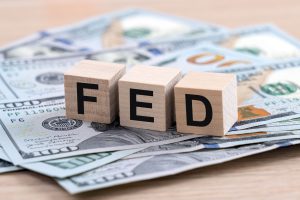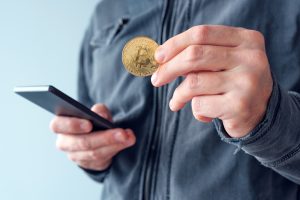Americans are increasingly pessimistic about the economy, and many Wall Street economists agree that a recession could be on the horizon. Yet despite the gloomy mood in surveys, the official economic data still looks surprisingly resilient — for now.
So when will the numbers start matching the mood? According to experts, the real pain might start showing up this summer.
Goldman Sachs US economist Emanuel Abecasis shared in a note to clients that although survey data has already begun to soften, the “hard data” — like retail sales and hiring — usually lags by a few months. Based on an analysis of 45 different indicators, Goldman Sachs estimates that it typically takes about four months for economic figures to show significant deterioration after a major event triggers a slowdown.
And there’s no mystery about what the triggering event is this time: President Trump’s latest tariff increases have pushed the US’s effective tariff rate to its highest level in a century. Economists believe these tariffs will raise prices for consumers, slow down spending, and eventually cool off hiring.
Goldman Sachs now sees a 45% probability of a US recession within the next 12 months — three times higher than the usual baseline of 15%.
The Calm Before the Storm
While American consumers are already feeling the heat — with the University of Michigan’s consumer sentiment index hovering near its lowest level since 1978 — official statistics are still surprisingly strong. Retail sales in March posted their biggest jump in nearly two years, and durable goods orders soared 9.2% that month, driven largely by a historic surge in aircraft orders.
However, economists like Gregory Daco, chief economist at EY, warn that these strong numbers could be misleading. Businesses and consumers may be racing to buy goods before prices rise further due to tariffs. That kind of “pull forward” in demand often leads to a painful slump afterward.
“The thing with any pull forward of demand is that the drop thereafter can be extremely painful,” Daco told Yahoo Finance. “If you’ve stocked up on inventory, you’re not going to be placing new orders the next month.”
A Familiar Pattern
The pattern economists are seeing mirrors previous event-driven recessions, like the 1973 oil shock and the 1980 interest rate spike. First, surveys and sentiment sour. Then, after a few months, the slowdown shows up in the hard numbers: weaker spending, slower hiring, and rising layoffs.
If history repeats itself, Americans could start feeling the full brunt of the downturn by late summer 2025.
Until then, the economy might continue sending mixed signals, with consumer worries growing even as official reports still look rosy. But experts warn: don’t let the calm fool you. A mild, “garden-variety recession” may already be quietly forming beneath the surface.







